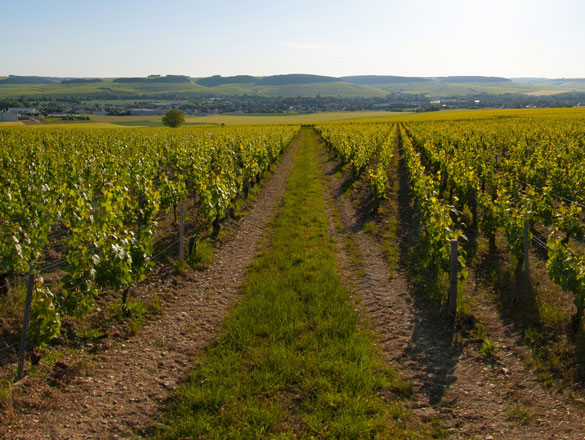

The vineyards of Bourgogne produce some great wines with a historical and international reputation. However, the region is not simply limited to its iconic appellations. In addition to its Village Premier Cru and Grand Cru AOCs, it also produces a range of wonderful Régionale and Village appellations to explore.
You will also find a full list of the Bourgogne’s Climats and lieux-dits on this page.
Check out the complete list of the 84 Bourgogne appellations.
However, your exploration has only just begun. Bourgogne wines have never before offered such high quality. Besides our range of internationally celebrated wines, try some of our lesser-known appellations where there are lots of surprises in store.
And for a fun way to find out more about the wines on offer, try out our “Which Bourgogne wine is right for me?” quiz, or check out Bourgogne Maps to take an interactive tour of the region.
Village appellation
VIGNOBLES DE CHABLIS ET DU GRAND AUXERROIS
5 janvier 1944
White wines only - Chardonnay (locally known as « Beaunois »)
Area under production*:
1 hectare (ha) = 10,000 m2 = 24 ouvrées.
1,108 ha.
*In 2018
Appellation Village of the Chablis wine-growing region (Yonne).
Producing communes: this appellation may be grown in any of the communes within the delimited area of the Chablis wine-growing district.

White: this wine is a brilliant pale gold, the colour of rye-straw, sometimes flecked with green. Its aromas are of white flowers (may, acacia) mixed with citrussy notes (lemon, grapefruit) over a mineral base (gun-flint). Notes of peach and other white-fleshed fruits are sometimes encountered. The mouth is light and lively with well-balanced acidity. A spirited attack soon yields to a likeable roundess. A touch of saltiness (iodine) is characteristic.
Freshness, body and persistence come together to form a harmonious whole. The wine is drunk young, ideally after two years.

White: despite being born far from the sea, Petit Chablis has a tang of ozone about it which calls for oysters, raw fish, and prawns (raw, grilled, or in sauce). It also makes a willing partner for small river fish (fried), grilled sardines, and numerous other fish species. But above all it is its frisky and energetic character which constitutes its charm. It is masterly with fried eggs and omelettes, as it tames their heaviness in the mouth. In the same way, it lends definition to tripe sausages (andouillettes) and snails (escargots). Goat cheese is perfectly at ease with its roguish appeal, as are pressed or hard cheeses such as Gouda or Gruyère. Its freshness and simplicity make it an ideal wine for summer salads or as a pre-dinner drink - try serving it with savory puff pastries (gougères).
Serving temperatures: 8°C as a pre-dinner drink,9 to 10°C with food.

The vineyards of the Petit Chablis appellation lie on either side of the river Serein. This AOC was instituted in 1944. It is one of the jewels in the crown of the Chablis region which forms the “golden gate” to Bourgogne. A Chardonnay wine through and through, Petit Chablis has, in fact, nothing “little” about it.

These carefully selected terroirs occupy the higher portions of the winegrowing slopes or the edge of the plateau. The soils are brown and derived from hard limestones, with patches of sandy silts. Altitudes: mostly between 230 and 280 metres, with various exposures.
